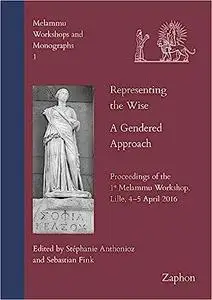Stephanie Anthonioz, "Representing the Wise: A Gendered Approach: Proceedings of the 1st Melammu Workshop. Lille, 4-5 April 2016 "
English | ISBN: 3963270683 | 2019 | 206 pages | PDF | 3 MB
English | ISBN: 3963270683 | 2019 | 206 pages | PDF | 3 MB
The first of the Melammu Workshops askes how female and male representatives of the wise, female and male sages, were conceptualized in antiquity and whether there was a clear difference between female and male wisdom. The workshop followed a kind of historical chronology starting from Mesopotamian and Egyptian sources, continuing West through the Levant and ending with Greek and Roman documentation. It permitted a vast exploration of sages, both divine and human, as they were portrayed in antiquity. The papers brought to light several tensions among which the question of gender was not the least. Indeed, the nature of wisdom itself, human and divine, empirical, theoretical but also at times abstract and difficult to outline, pointed to the difficulty of a definition. Hence the plurality of representations might be interpreted as a sign of this difficulty and variety. Moreover, the gender question was found to be strongly related to the societies and their organization as evidenced elsewhere in current research. Any generalization or typology of the sages at this point could not be drawn but a clear historical evolution toward masculine representation of wisdom was evidenced. Certainly, this has to do with social change, economic structures and the loci of power and authority. However, in many regards, women appear as counterparts or homologues of men in their quest for wisdom. In that sense, the workshop proved very fruitful in displaying a large gallery of portraits and in bringing to light differences according to social settings and sources but also main trends of evolution through historical times.
Read more



